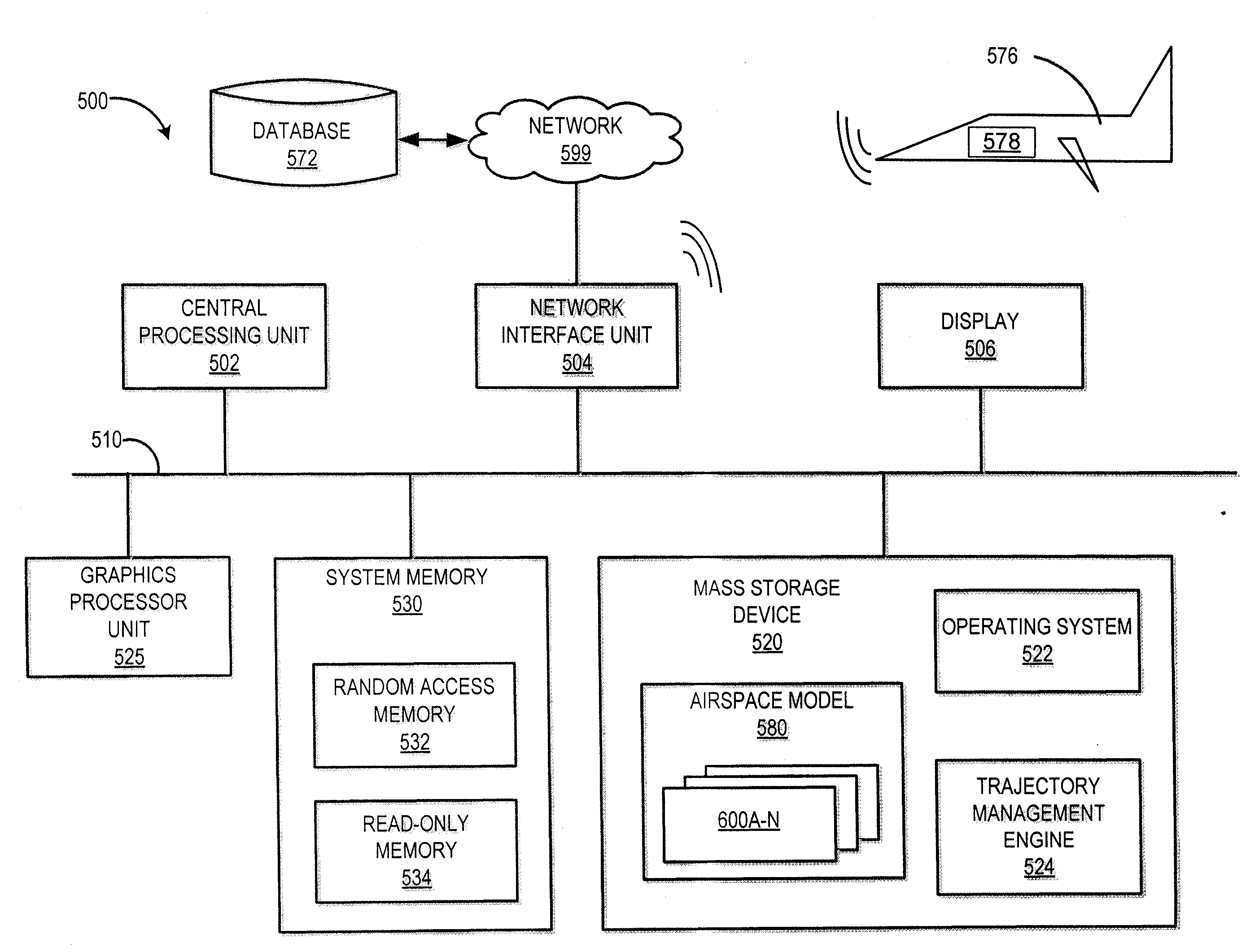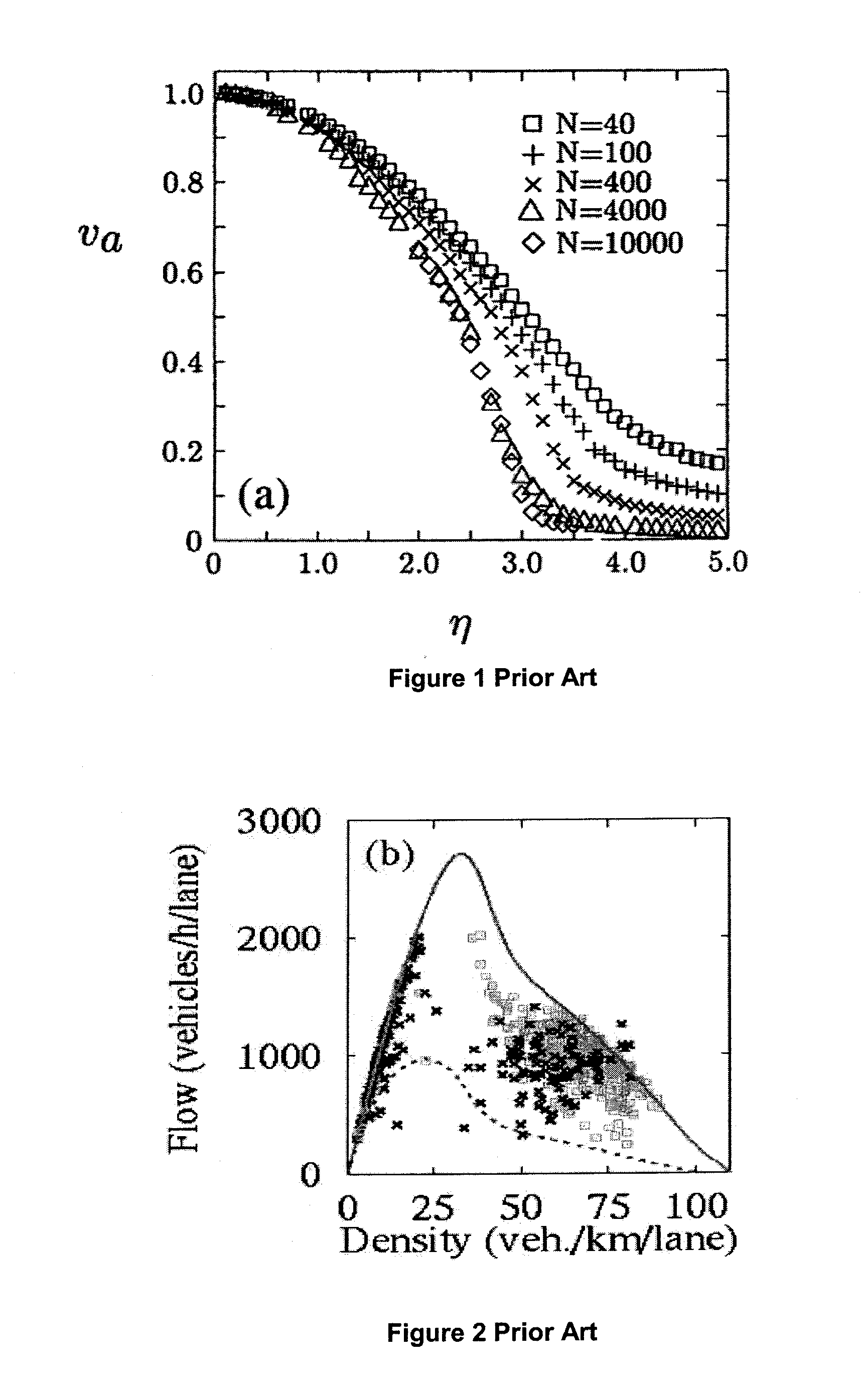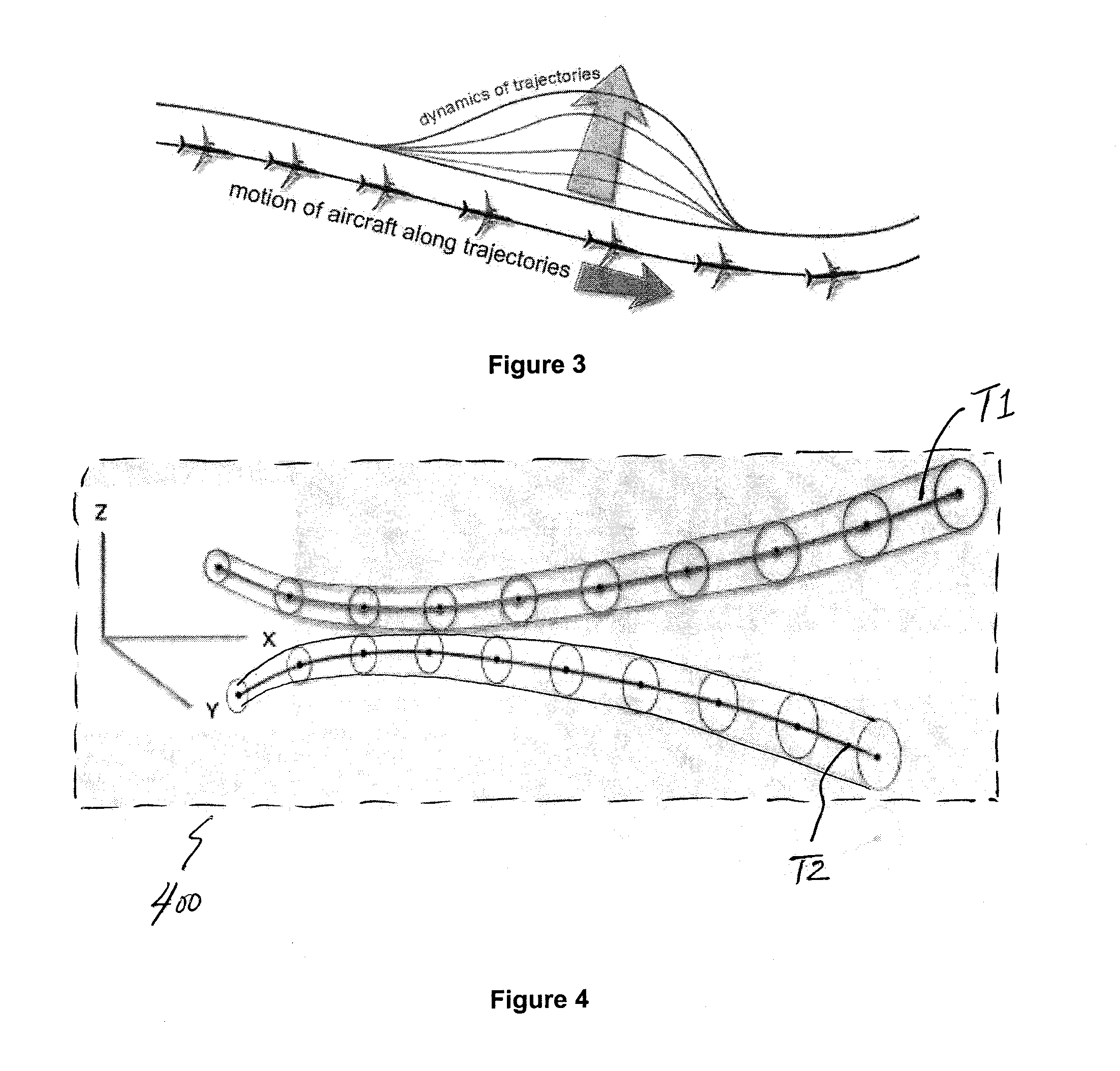System and Method for Planning, Disruption Management, and Optimization of Networked, Scheduled or On-Demand Air Transport Fleet Trajectory Operations
a fleet trajectory and air traffic technology, applied in the field of system and technology for controlling and monitoring air traffic within an airspace, can solve problems such as requiring continuous replanning, forcing others to re-plan, and ripple through the system, so as to reduce fuel burn, reduce fuel consumption, and maintain a population
- Summary
- Abstract
- Description
- Claims
- Application Information
AI Technical Summary
Benefits of technology
Problems solved by technology
Method used
Image
Examples
Embodiment Construction
List of Abbreviations and Acronyms
[0070]3SAT The Satisfiability Construct for all NP-hard problems[0071]4DT Four Dimensional Trajectories[0072]5DT Five Dimensional Trajectories[0073]ABM Agent-Based Modeling[0074]ANSP Air Navigation Service Provider[0075]AOC Airline Operations Center[0076]ATM Air Traffic Management[0077]ATOP Advanced Technologies & Oceanic Procedures (FAA Ocean 21 Prog.)[0078]ATSP Air Transportation Service Provider[0079]CUDA Compute Unified Device Architecture[0080]DARP Dynamic Airspace Reroute Program[0081]DCIT Data Communications Implementation Team (FAA)[0082]FANS Future Air Navigation System[0083]FMC Flight Management Computer[0084]JPDO Joint Planning and Development Office[0085]NextGen Next Generation Air Transportation System[0086]NAS National Airspace System[0087]PBC Performance-Based Communication[0088]PBN Performance-Based Navigation[0089]PBS Performance-Based Surveillance[0090]RBT Reference Business Trajectory[0091]RNP Required Navigation Performance[0092]...
PUM
 Login to View More
Login to View More Abstract
Description
Claims
Application Information
 Login to View More
Login to View More - R&D
- Intellectual Property
- Life Sciences
- Materials
- Tech Scout
- Unparalleled Data Quality
- Higher Quality Content
- 60% Fewer Hallucinations
Browse by: Latest US Patents, China's latest patents, Technical Efficacy Thesaurus, Application Domain, Technology Topic, Popular Technical Reports.
© 2025 PatSnap. All rights reserved.Legal|Privacy policy|Modern Slavery Act Transparency Statement|Sitemap|About US| Contact US: help@patsnap.com



